Investigating the Spatial-Temporal Variation of Pre-Trip Searching in an Urban Agglomeration
Abstract
1. Introduction
2. Literature Review
2.1. Tourism Information Search (TIS)
2.2. Search Engine Used in the Forecasting
3. Methodology
4. Empirical Results
4.1. Data Resource
4.1.1. Online Search Keywords
4.1.2. Tourist Volume Data
4.1.3. Distribution Characteristics
4.2. Spatial Disparity of SVI Precursory Effects
4.3. Application Verification of Precursory Effects
4.3.1. ARIMA Model
4.3.2. Vector Autoregressive Model
5. Conclusions
6. Limitations
Author Contributions
Funding
Institutional Review Board Statement
Informed Consent Statement
Data Availability Statement
Acknowledgments
Conflicts of Interest
Appendix A
| Granger Causality | F | p Value | Granger Causality | F | p Value |
|---|---|---|---|---|---|
| JS-SZBD ∕→ JS-SZY | 3.0242 | 0.0264 | JS-TZY ∕→ JS-TZBD | 2.3728 | 0.1817 |
| JS-SZBD ∕→ JS-SZY | 3.8721 | 0.0305 | JS-TZBD ∕→ JS-TZY | 3.3643 | 0.0394 |
| JS-WXY ∕→ JS-WXBD | 2.3936 | 0.0277 | JS-SQY ∕→ JS-SQBD | 2.4824 | 0.1134 |
| JS-WXBD ∕→ JS-WXY | 2.4024 | 0.0219 | JS-SQBD ∕→ JS-SQY | 1.7216 | 0.0341 |
| JS-ZJY ∕→ JS-ZJBD | 1.9947 | 0.1313 | JS-YCY ∕→ JS-YCBD | 1.9985 | 0.0972 |
| JS-ZJBD ∕→ JS-ZJY | 3.6285 | 0.0211 | JS-YCBD ∕→ JS-YCY | 3.3845 | 0.0133 |
| JS-CZY ∕→ JS-CZBD | 1.3323 | 0.1633 | JS-HAY ∕→ JS-HABD | 1.4735 | 0.07937 |
| JS-CZBD ∕→ JS-CZY | 3.3824 | 0.0216 | JS-HABD ∕→ JS-HAY | 3.2678 | 0.0482 |
| JS-NTY ∕→ JS-NTBD | 1.7834 | 0.0749 | JS-LYGY ∕→ JS-LYGBD | 2.5571 | 0.1113 |
| JS-NTBD ∕→ JS-NTY | 3.6296 | 0.0137 | JS-LYGBD ∕→ JS-LYGY | 3.4737 | 0.0081 |
| JS-YZY ∕→ JS-YZBD | 3.3721 | 0.0831 | JS-XZY ∕→ JS-XZBD | 1.0890 | 0.0213 |
| JS-YZBD ∕→ JS-YZY | 4.0013 | 0.0125 | JS-XZBD ∕→ JS-XZY | 2.9386 | 0.0050 |
| AH-CZY ∕→ AH-CZBD | 4.1127 | 0.0721 | AH-HNY ∕→ AH-HNBD | 4.2078 | 0.0538 |
| AH-CZBD ∕→ AH-CZY | 4.3382 | 0.0031 | AH-HNBD ∕→ AH-HNY | 4.3681 | 0.0120 |
| AH-MASY ∕→ AH-MASBD | 4.3297 | 0.1772 | AH-HBY ∕→ AH-HBBD | 4.2976 | 0.0900 |
| AH-MASBD ∕→ AH-MASY | 4.4019 | 0.0043 | AH-HBBD ∕→ AH-HBY | 4.3174 | 0.0087 |
| AH-WHY ∕→ AH-WHBD | 3.9782 | 0.1522 | AH-BZY ∕→ AH-BZBD | 4.3933 | 0.1103 |
| AH-WHBD ∕→ AH-WHY | 4.1973 | 0.0381 | AH-BZBD ∕→ AH-BZY | 3.8962 | 0.0064 |
| AH-HFY ∕→ AH-HFBD | 4.3215 | 0.0226 | AH-FYY ∕→ AH-FYBD | 3.5856 | 0.1074 |
| AH-HFBD ∕→ AH-HFY | 3.7829 | 0.0097 | AH-FYBD ∕→ AH-FYY | 4.6274 | 0.0048 |
| AH-XCY ∕→ AH-XCBD | 3.7751 | 0.1030 | AH-AQY ∕→ AH-AQBD | 3.9856 | 0.0937 |
| AH-XCBD ∕→ AH-XCY | 4.3970 | 0.0042 | AH-AQBD ∕→ AH-AQY | 3.8775 | 0.0219 |
| AH-BBY ∕→ AH-BBBD | 3.5823 | 0.0830 | AH-LAY ∕→ AH-LABD | 4.0294 | 0.1143 |
| AH-BBBD ∕→ AH-BBY | 3.8592 | 0.0052 | AH-LABD ∕→ AH-LAY | 4.1395 | 0.0005 |
| AH-SZY ∕→ AH-SZBD | 4.0173 | 0.0077 | AH-CZY ∕→ AH-CZBD | 3.9402 | 0.1047 |
| AH-SZBD ∕→ AH-SZY | 4.1196 | 0.0036 | AH-CZBD ∕→ AH-CZY | 3.6844 | 0.0031 |
| AH-TLY ∕→ AH-TLBD | 3.8925 | 0.0823 | AH-HS ∕→ AH-HSBD | 4.1186 | 0.2901 |
| AH-TLBD ∕→ AH-TLY | 4.3168 | 0.0271 | AH-HSBD ∕→ AH-HS | 4.3921 | 0.0048 |
| ZJ-HZY ∕→ ZJ-HZBD | 3.0121 | 0.0038 | ZJ-JHY ∕→ ZJ-JHBD | 3.0642 | 0.1031 |
| ZJ-HZBD ∕→ ZJ-HZY | 3.0793 | 0.0029 | ZJ-JHBD ∕→ ZJ-JHY | 2.9941 | 0.0002 |
| ZJ-hzY ∕→ ZJ-hzBD | 2.9947 | 0.1125 | ZJ-NBY ∕→ ZJ-NBBD | 2.8749 | 0.0036 |
| ZJ-hzBD ∕→ ZJ-hzY | 3.1185 | 0.0038 | ZJ-NBBD ∕→ ZJ-NBY | 2.9951 | 0.0047 |
| ZJ-JXY ∕→ ZJ-JXBD | 3.0275 | 0.0921 | ZJ-ZSY ∕→ ZJ-ZSBD | 3.0625 | 0.0722 |
| ZJ-JXBD ∕→ ZJ-JXY | 2.9952 | 0.0089 | ZJ-ZSBD ∕→ ZJ-ZSY | 3.0431 | 0.0311 |
| ZJ-SXY ∕→ ZJ-SXBD | 2.9875 | 0.0802 | ZJ-TZY ∕→ ZJ-TZBD | 2.9742 | 0.0814 |
| ZJ-SXBD ∕→ ZJ-SXY | 3.0174 | 0.0044 | ZJ-TZBD ∕→ ZJ-TZY | 2.9873 | 0.0207 |
| ZJ-QZY ∕→ ZJ-QZBD | 3.0293 | 0.0723 | ZJ-WZY ∕→ ZJ-WZBD | 3.0616 | 0.0563 |
| ZJ-QZBD ∕→ ZJ-QZY | 2.9981 | 0.0117 | ZJ-WZBD ∕→ ZJ-WZY | 2.8979 | 0.0081 |
| ZJ-LSY ∕→ ZJ-LSBD | 3.0783 | 0.0824 | SHY ∕→ SHBD | 3.7826 | 0.0041 |
| ZJ-LSBD ∕→ ZJ-LSY | 2.9433 | 0.0307 | SHBD ∕→ SHY | 3.5741 | 0.0003 |
References
- Yang, X.; Pan, B.; Evans, J.A.; Lv, B. Forecasting Chinese tourist volume with search engine data. Tour. Manag. 2015, 46, 386–397. [Google Scholar] [CrossRef]
- Xu, J.; Qiao, G.; Hou, S. Exploring factors influencing travel information-seeking intention on short video platforms. Curr. Issues Tour. 2022. [Google Scholar] [CrossRef]
- Vong, F. Application of cultural tourist typology in a gaming destination—Macao. Curr. Issues Tour. 2016, 19, 949–965. [Google Scholar] [CrossRef]
- Tavitiyaman, P.; Qu, H.; Tsang, W.-S.L.; Lam, C.-W.R. The influence of smart tourism applications on perceived destination image and behavioral intention: The moderating role of information search behavior. J. Hosp. Tour. Manag. 2021, 46, 476–487. [Google Scholar] [CrossRef]
- Pop, R.-A.; Saplacan, Z.; Dabija, D.-C.; Alt, M.-A. The impact of social media influencers on travel decisions: The role of trust in consumer decision journey. Curr. Issues Tour. 2022, 25, 823–843. [Google Scholar] [CrossRef]
- Liu, P.; Zhang, H.; Zhang, J.; Sun, Y.; Qiu, M. Spatial-temporal response patterns of tourist flow under impulse pre-trip information search: From online to arrival. Tour. Manag. 2019, 73, 105–114. [Google Scholar] [CrossRef]
- Li, H.; Zhang, L.; Hsu, C.H.C. Research on user-generated photos in tourism and hospitality: A systematic review and way forward. Tour. Manag. 2023, 96, 104714. [Google Scholar] [CrossRef]
- Li, J.; Xu, L.; Tang, L.; Wang, S.; Li, L. Big data in tourism research: A literature review. Tour. Manag. 2018, 68, 301–323. [Google Scholar] [CrossRef]
- Li, M.; Zhang, C.; Sun, S.; Wang, S. A novel deep learning approach for tourism volume forecasting with tourist search data. Int. J. Tour. Res. 2022, 25, 183–197. [Google Scholar] [CrossRef]
- Huang, B.; Hao, H. A novel two-step procedure for tourism demand forecasting. Curr. Issues Tour. 2021, 24, 1199–1210. [Google Scholar] [CrossRef]
- Schneider, M.J.; Gupta, S. Forecasting sales of new and existing products using consumer reviews: A random projections approach. Int. J. Forecast. 2016, 32, 243–256. [Google Scholar] [CrossRef]
- Li, H.; Hu, M.; Li, G. Forecasting tourism demand with multisource big data. Ann. Tour. Res. 2020, 83, 102912. [Google Scholar] [CrossRef]
- Bi, J.-W.; Liu, Y.; Li, H. Daily tourism volume forecasting for tourist attractions. Ann. Tour. Res. 2020, 83, 102923. [Google Scholar] [CrossRef]
- Liu, A.; Lin, V.S.; Li, G.; Song, H. Ex Ante Tourism Forecasting Assessment. J. Travel Res. 2020, 61, 64–75. [Google Scholar] [CrossRef]
- Silva, E.S.; Hassani, H.; Heravi, S.; Huang, X. Forecasting tourism demand with denoised neural networks. Ann. Tour. Res. 2019, 74, 134–154. [Google Scholar] [CrossRef]
- Hu, M.; Song, H. Data source combination for tourism demand forecasting. Tour. Econ. 2019, 26, 1248–1265. [Google Scholar] [CrossRef]
- Ma, S.; Yang, S. COVID-19 forecasts using Internet search information in the United States. Sci. Rep. 2022, 12, 11539. [Google Scholar] [CrossRef]
- Sun, S.; Wei, Y.; Tsui, K.-L.; Wang, S. Forecasting tourist arrivals with machine learning and internet search index. Tour. Manag. 2019, 70, 1–10. [Google Scholar] [CrossRef]
- Dergiades, T.; Mavragani, E.; Pan, B. Google Trends and tourists’ arrivals: Emerging biases and proposed corrections. Tour. Manag. 2018, 66, 108–120. [Google Scholar] [CrossRef]
- Moehring, M.; Keller, B.; Schmidt, R.; Dacko, S. Google Popular Times: Towards a better understanding of tourist customer patronage behavior. Tour. Rev. 2021, 76, 553–569. [Google Scholar] [CrossRef]
- Raun, J.; Ahas, R.; Tiru, M. Measuring tourism destinations using mobile tracking data. Tour. Manag. 2016, 57, 202–212. [Google Scholar] [CrossRef]
- Song, C.; Qu, Z.; Blumm, N.; Barabasi, A.-L. Limits of Predictability in Human Mobility. Science 2010, 327, 1018–1021. [Google Scholar] [CrossRef]
- Nilbe, K.; Ahas, R.; Silm, S. Evaluating the Travel Distances of Events Visitors and Regular Visitors Using Mobile Positioning Data: The Case of Estonia. J. Urban Technol. 2014, 21, 91–107. [Google Scholar] [CrossRef]
- Gunter, U.; Oender, I. Forecasting international city tourism demand for Paris: Accuracy of uni- and multivariate models employing monthly data. Tour. Manag. 2015, 46, 123–135. [Google Scholar] [CrossRef]
- Liu, H.; Liu, W.; Wang, Y. A Study On The Influencing Factors Of Tourism Demand From Mainland China To Hong Kong. J. Hosp. Tour. Res. 2021, 45, 171–191. [Google Scholar] [CrossRef]
- Hyde, K.F. Information processing and touring planning theory. Ann. Tour. Res. 2008, 35, 712–731. [Google Scholar] [CrossRef]
- Tang, L.; Zhang, C.; Li, T.; Li, L. A novel BEMD-based method for forecasting tourist volume with search engine data. Tour. Econ. 2021, 27, 1015–1038. [Google Scholar] [CrossRef]
- Bakirtas, H.; Demirci, V.G. Can Google Trends data provide information on consumer’s perception regarding hotel brands? Inf. Technol. Tour. 2022, 24, 57–83. [Google Scholar] [CrossRef]
- Bangwayo-Skeete, P.F.; Skeete, R.W. Can Google data improve the forecasting performance of tourist arrivals? Mixed-data sampling approach. Tour. Manag. 2015, 46, 454–464. [Google Scholar] [CrossRef]
- Jani, D.; Jang, J.-H.; Hwang, Y.-H. Big Five Factors of Personality and Tourists’ Internet Search Behavior. Asia Pac. J. Tour. Res. 2014, 19, 600–615. [Google Scholar] [CrossRef]
- Ni, J.; Rhim, A.H.R.; Chiu, D.K.W.; Ho, K.K.W. Information search behavior among Chinese self-drive tourists in the smartphone era. Inf. Discov. Deliv. 2022, 50, 285–296. [Google Scholar] [CrossRef]
- Huertas, A.; Miguel, O.-M. Do tourists seek the same information at destinations? Analysis of digital tourist information searches according to different types of tourists. Eur. J. Tour. Res. 2022, 32, 3211. [Google Scholar] [CrossRef]
- Xie, G.; Li, X.; Qian, Y.; Wang, S. Forecasting tourism demand with KPCA-based web search indexes. Tour. Econ. 2021, 27, 721–743. [Google Scholar] [CrossRef]
- Li, X.; Wu, Q.; Peng, G. Tourism forecasting by search engine data with noise-processing. Afr. J. Bus. Manag. 2016, 10, 114–130. [Google Scholar] [CrossRef]
- Fernandez-Cavia, J.; Vinyals-Mirabent, S.; Fernandez-Planells, A.; Weber, W.; Pedraza-Jimenez, R. Tourist information sources at different stages of the travel experience. Prof. De La Inf. 2020, 29, e290219. [Google Scholar] [CrossRef]
- Bausch, T.; Gartner, W.C.; Humpe, A. How weather conditions affect guest arrivals and duration of stay: An alpine destination case. Int. J. Tour. Res. 2021, 23, 1006–1026. [Google Scholar] [CrossRef]
- Wang, S.; Yu, Y.; Chen, J.; Liu, J. Impact of climate change on cherry blossom viewing tourism: Analysis and simulation based on Weibo proxy data. Curr. Issues Tour. 2023, 26, 718–734. [Google Scholar] [CrossRef]
- Bi, J.-W.; Han, T.-Y.; Yao, Y. Collaborative forecasting of tourism demand for multiple tourist attractions with spatial dependence: A combined deep learning model. Tour. Econ. 2023. [Google Scholar] [CrossRef]
- Wickramasinghe, K.; Ratnasiri, S. The role of disaggregated search data in improving tourism forecasts: Evidence from Sri Lanka. Curr. Issues Tour. 2021, 24, 2740–2754. [Google Scholar] [CrossRef]
- Li, Y.; Li, Y.; Li, J.; Ma, S.; Gao, P. Tourism demand forecasting from the perspective of mobility: A brand-new predictive variable generated from intercity population mobility big data. Asia Pac. J. Tour. Res. 2022, 27, 526–546. [Google Scholar] [CrossRef]
- Zhu, L.; Lim, C.; Xie, W.; Wu, Y. Modelling tourist flow association for tourism demand forecasting. Curr. Issues Tour. 2018, 21, 902–916. [Google Scholar] [CrossRef]
- Claveria, O.; Torra, S. Forecasting tourism demand to Catalonia: Neural networks vs. time series models. Econ. Model. 2014, 36, 220–228. [Google Scholar] [CrossRef]
- Saba, T.; Shahzad, M.N.; Iqbal, S.; Rehman, A.; Abunadi, I. A New Hybrid SARFIMA-ANN Model for Tourism Forecasting. Cmc-Comput. Mater. Contin. 2022, 71, 4785–4801. [Google Scholar] [CrossRef]
- Chen, R.; Liang, C.-Y.; Hong, W.-C.; Gu, D.-X. Forecasting holiday daily tourist flow based on seasonal support vector regression with adaptive genetic algorithm. Appl. Soft Comput. 2015, 26, 435–443. [Google Scholar] [CrossRef]
- Chen, X.; Cong, D. Application of Improved Algorithm Based on Four-Dimensional ResNet in Rural Tourism Passenger Flow Prediction. J. Sens. 2022, 2022, e9675647. [Google Scholar] [CrossRef]
- Kang, J.; Guo, X.; Fang, L.; Wang, X.; Fan, Z. Integration of Internet search data to predict tourism trends using spatial-temporal XGBoost composite model. Int. J. Geogr. Inf. Sci. 2022, 36, 236–252. [Google Scholar] [CrossRef]
- Jiao, E.X.; Chen, J.L. Tourism forecasting: A review of methodological developments over the last decade. Tour. Econ. 2019, 25, 469–492. [Google Scholar] [CrossRef]
- Liu, Y.-Y.; Tseng, F.-M.; Tseng, Y.-H. Big Data analytics for forecasting tourism destination arrivals with the applied Vector Autoregression model. Technol. Forecast. Soc. Chang. 2018, 130, 123–134. [Google Scholar] [CrossRef]
- Park, S.; Lee, J.; Song, W. Short-term forecasting of Japanese tourist inflow to South Korea using Google trends data. J. Travel Tour. Mark. 2017, 34, 357–368. [Google Scholar] [CrossRef]
- Hu, T.; Wang, H.; Law, R.; Geng, J. Diverse feature extraction techniques in internet search query to forecast tourism demand: An in-depth comparison. Tour. Manag. Perspect. 2023, 47, 101116. [Google Scholar] [CrossRef]
- Gu, X.; Sheng, L.; Lei, C. Specialization or diversification: A theoretical analysis for tourist cities. Cities 2022, 122, 1381–1384. [Google Scholar] [CrossRef]
- Zhang, Y.; Li, G.; Muskat, B.; Law, R. Tourism Demand Forecasting: A Decomposed Deep Learning Approach. J. Travel Res. 2021, 60, 981–997. [Google Scholar] [CrossRef]
- Yang, Y.; Zhang, H. Spatial-temporal forecasting of tourism demand. Ann. Tour. Res. 2019, 75, 106–119. [Google Scholar] [CrossRef]
- Huang, X.; Zhang, L.; Ding, Y. The Baidu Index: Uses in predicting tourism flows -A case study of the Forbidden City. Tour. Manag. 2017, 58, 301–306. [Google Scholar] [CrossRef]
- Dai, F.; Wang, D.; Kirillova, K. Travel inspiration in tourist decision making. Tour. Manag. 2022, 90, 104484. [Google Scholar] [CrossRef]
- Camacho, M.; Jose Pacce, M. Forecasting travellers in Spain with Google’s search volume indices. Tour. Econ. 2018, 24, 434–448. [Google Scholar] [CrossRef]
- Pan, B.; Yang, Y. Forecasting Destination Weekly Hotel Occupancy with Big Data. J. Travel Res. 2017, 56, 957–970. [Google Scholar] [CrossRef]
- Li, X.; Law, R. Forecasting Tourism Demand with Decomposed Search Cycles. J. Travel Res. 2020, 59, 52–68. [Google Scholar] [CrossRef]
- Hassani, H.; Silva, E.S.; Antonakakis, N.; Filis, G.; Gupta, R. Forecasting accuracy evaluation of tourist arrivals. Ann. Tour. Res. 2017, 63, 112–127. [Google Scholar] [CrossRef]
- Gounopoulos, D.; Petmezas, D.; Santamaria, D. Forecasting tourist arrivals in Greece and the impact of macroeconomic shocks from the countries of tourists’ origin. Ann. Tour. Res. 2012, 39, 641–666. [Google Scholar] [CrossRef]
- Yao, L.; Ma, R.; Wang, H. Baidu index-based forecast of daily tourist arrivals through rescaled range analysis, support vector regression, and autoregressive integrated moving average. Alex. Eng. J. 2021, 60, 365–372. [Google Scholar] [CrossRef]
- Siliverstovs, B.; Wochner, D.S. Google Trends and reality: Do the proportions match? Appraising the informational value of online search behavior: Evidence from Swiss tourism regions. J. Econ. Behav. Organ. 2018, 145, 1–23. [Google Scholar] [CrossRef]
- Xie, G.; Qian, Y.; Wang, S. Forecasting Chinese cruise tourism demand with big data: An optimized machine learning approach. Tour. Manag. 2021, 82, 104208. [Google Scholar] [CrossRef]
- Huynh-The, T.; Pham, Q.-V.; Pham, X.-Q.; Nguyen, T.T.; Han, Z.; Kim, D.-S. Artificial intelligence for the metaverse: A survey. Eng. Appl. Artif. Intell. 2023, 117, 105581. [Google Scholar] [CrossRef]
- Mateos-Minguez, P.; Arranz-Lopez, A.; Soria-Lara, J.A.; Lanzendorf, M. E-shoppers and multimodal accessibility to in-store retail: An analysis of spatial and social effects. J. Transp. Geogr. 2021, 96, 103198. [Google Scholar] [CrossRef]
- Buhalis, D. Strategic use of information technologies in the tourism industry. Tour. Manag. 1998, 19, 409–421. [Google Scholar] [CrossRef]
- Wang, X.; Zhen, F.; Tang, J.; Shen, L.; Liu, D. Applications, Experiences, and Challenges of Smart Tourism Development in China. J. Urban Technol. 2022, 29, 101–126. [Google Scholar] [CrossRef]
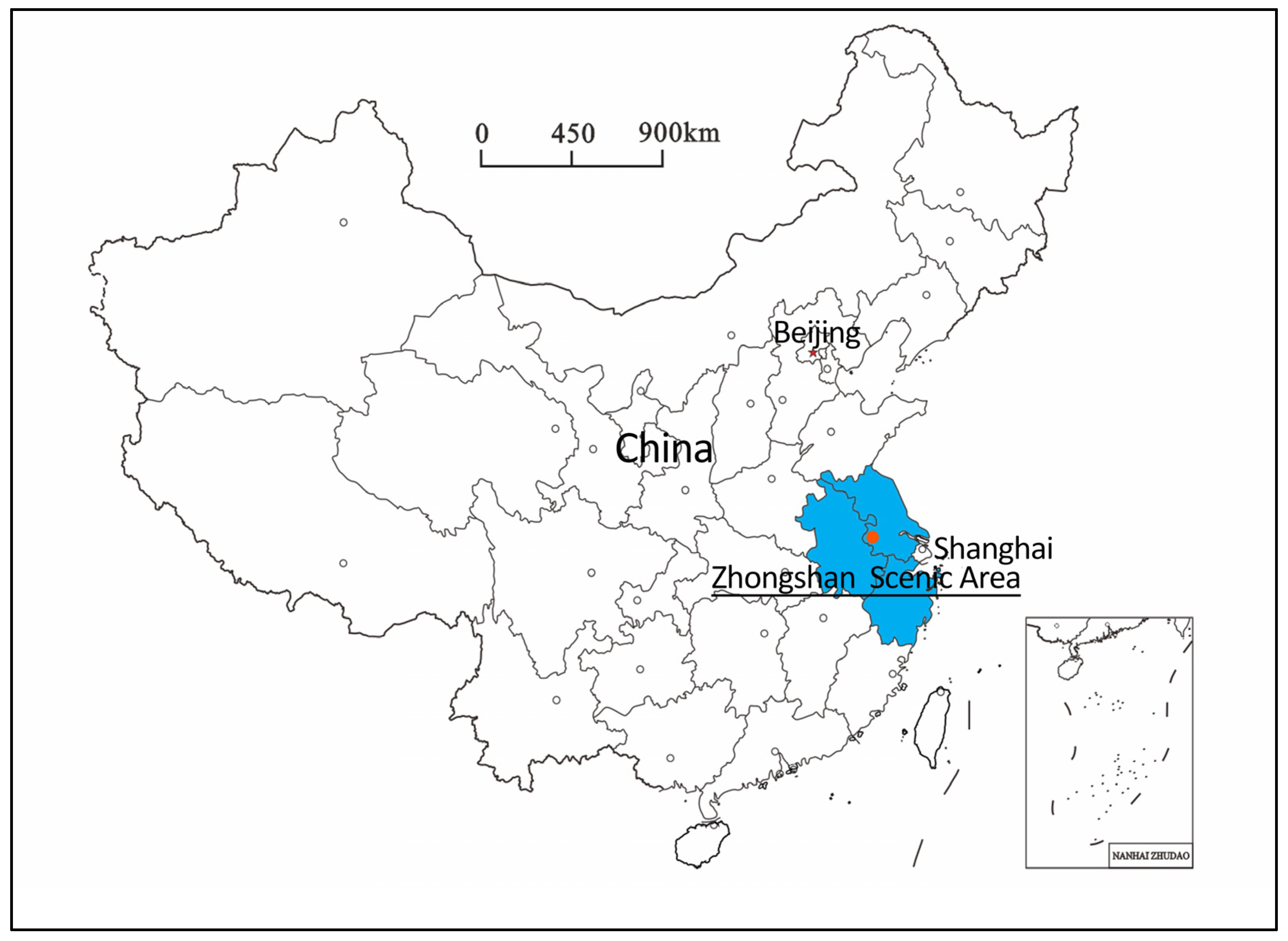
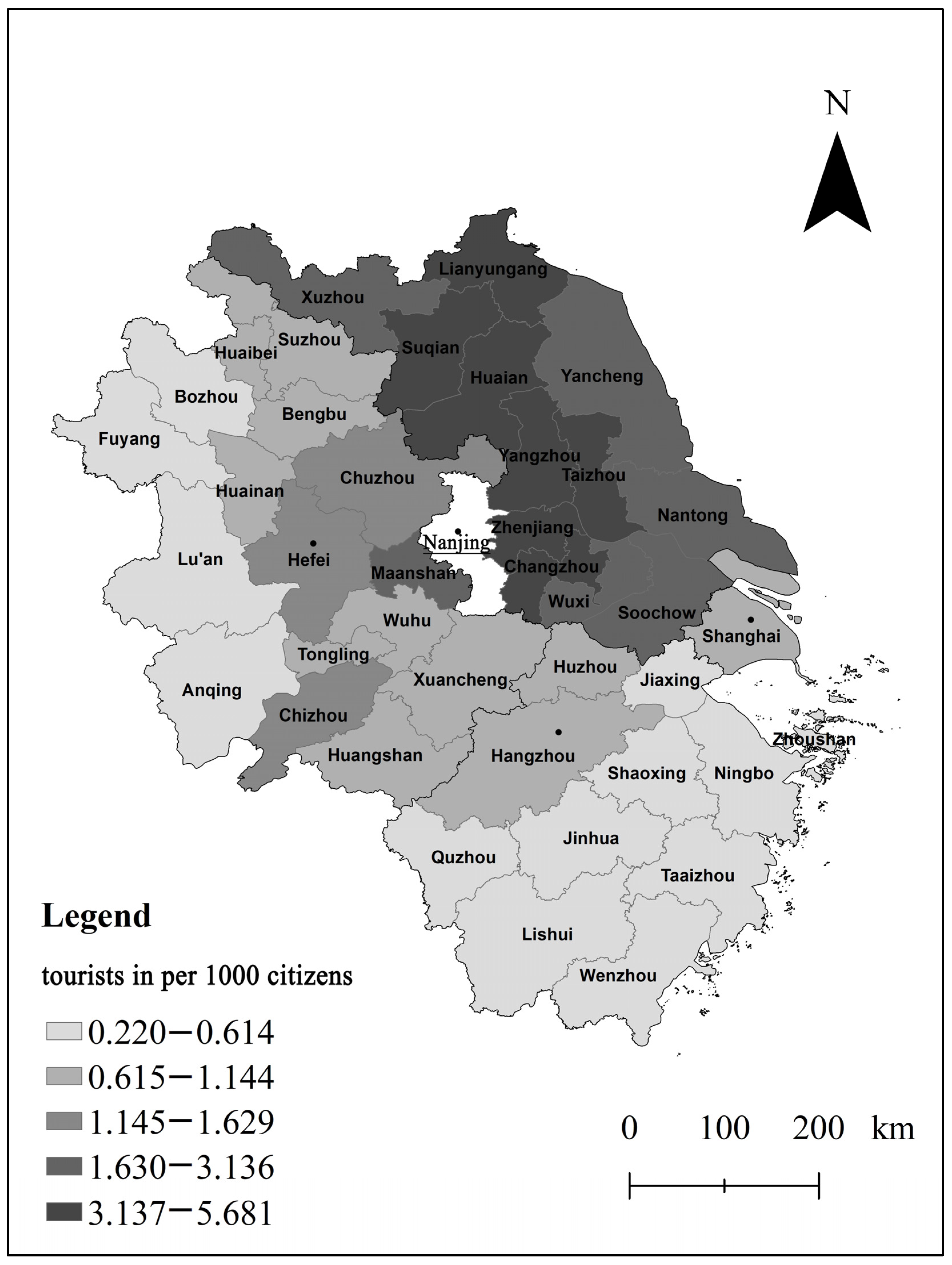
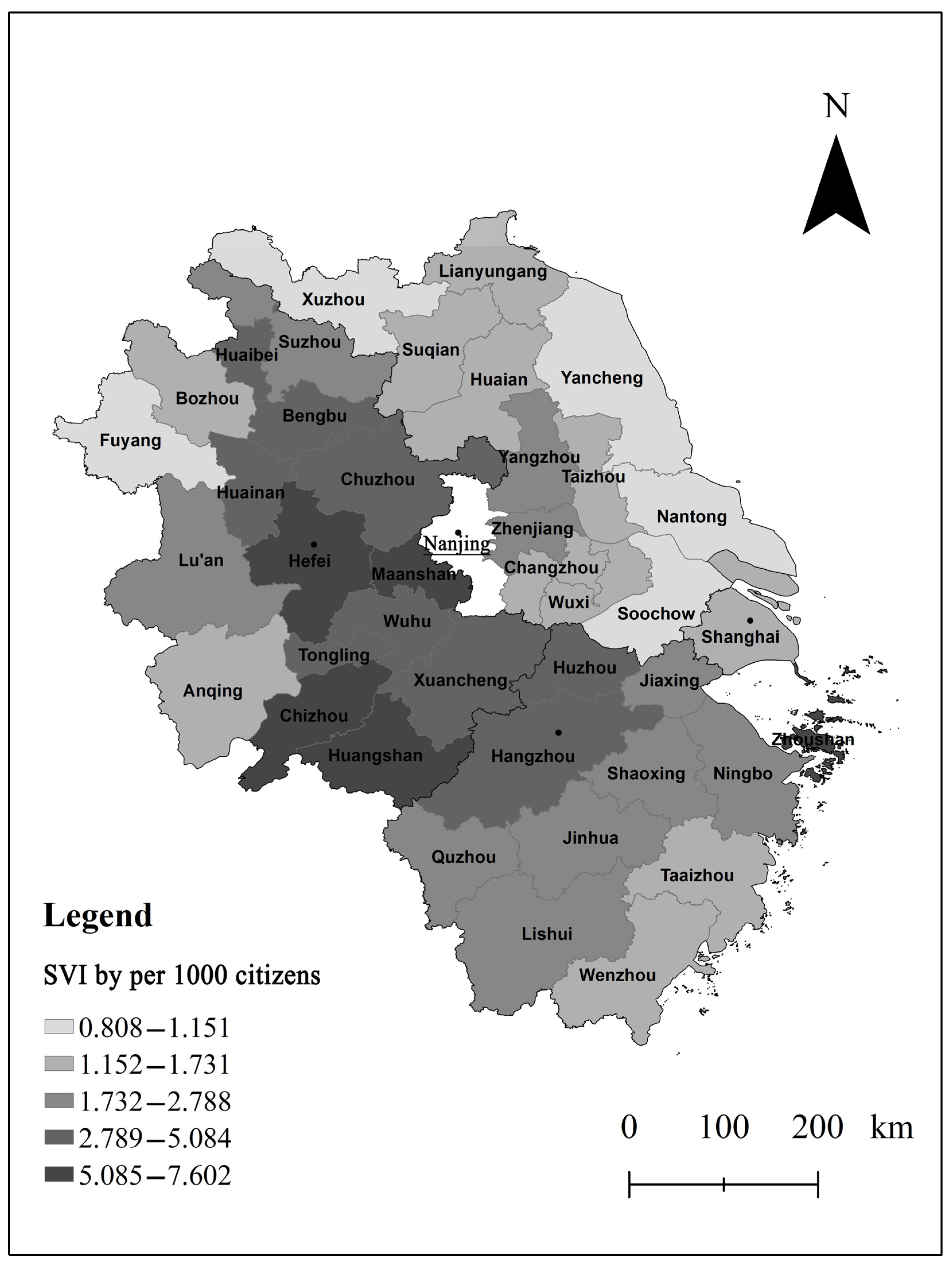
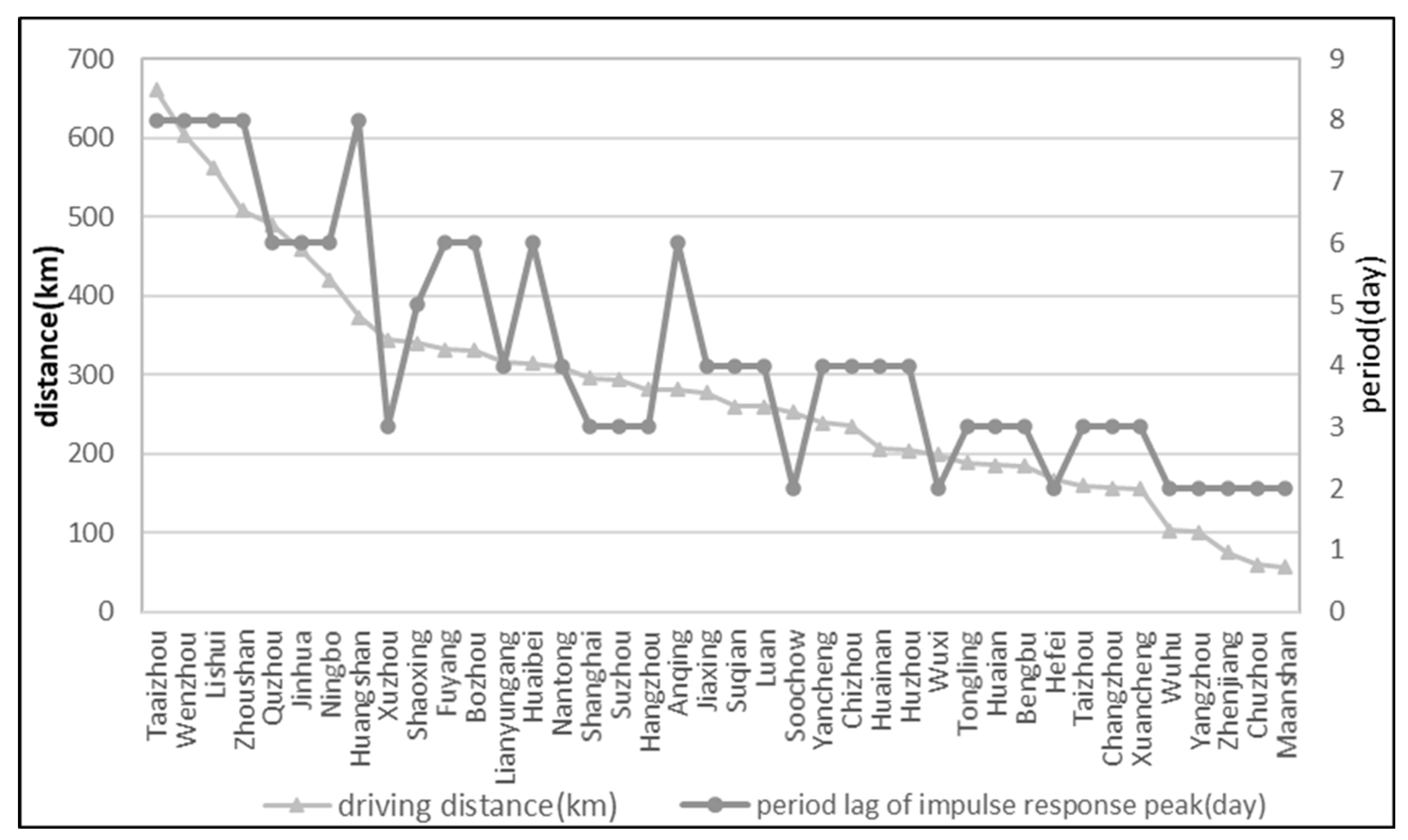
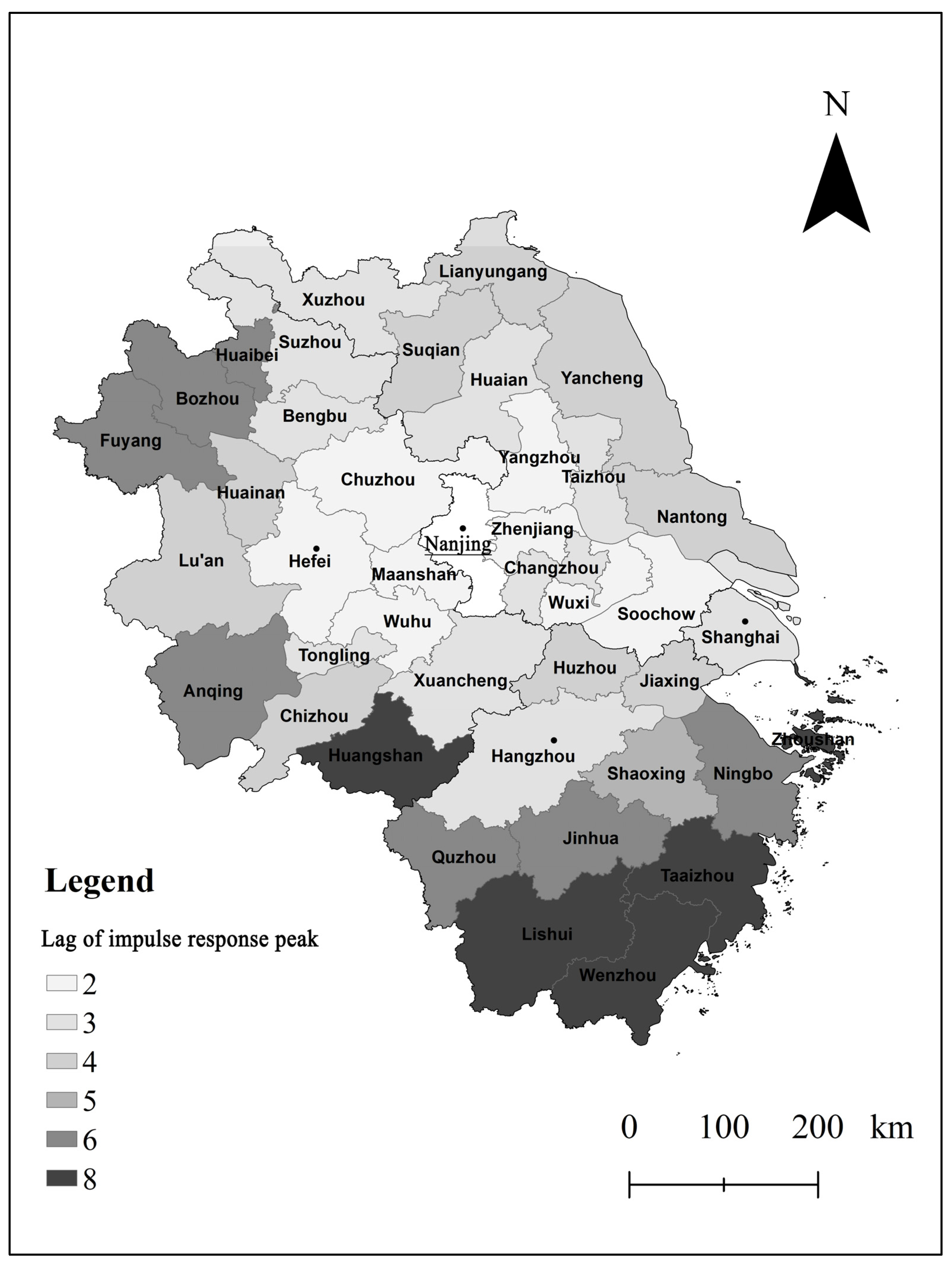
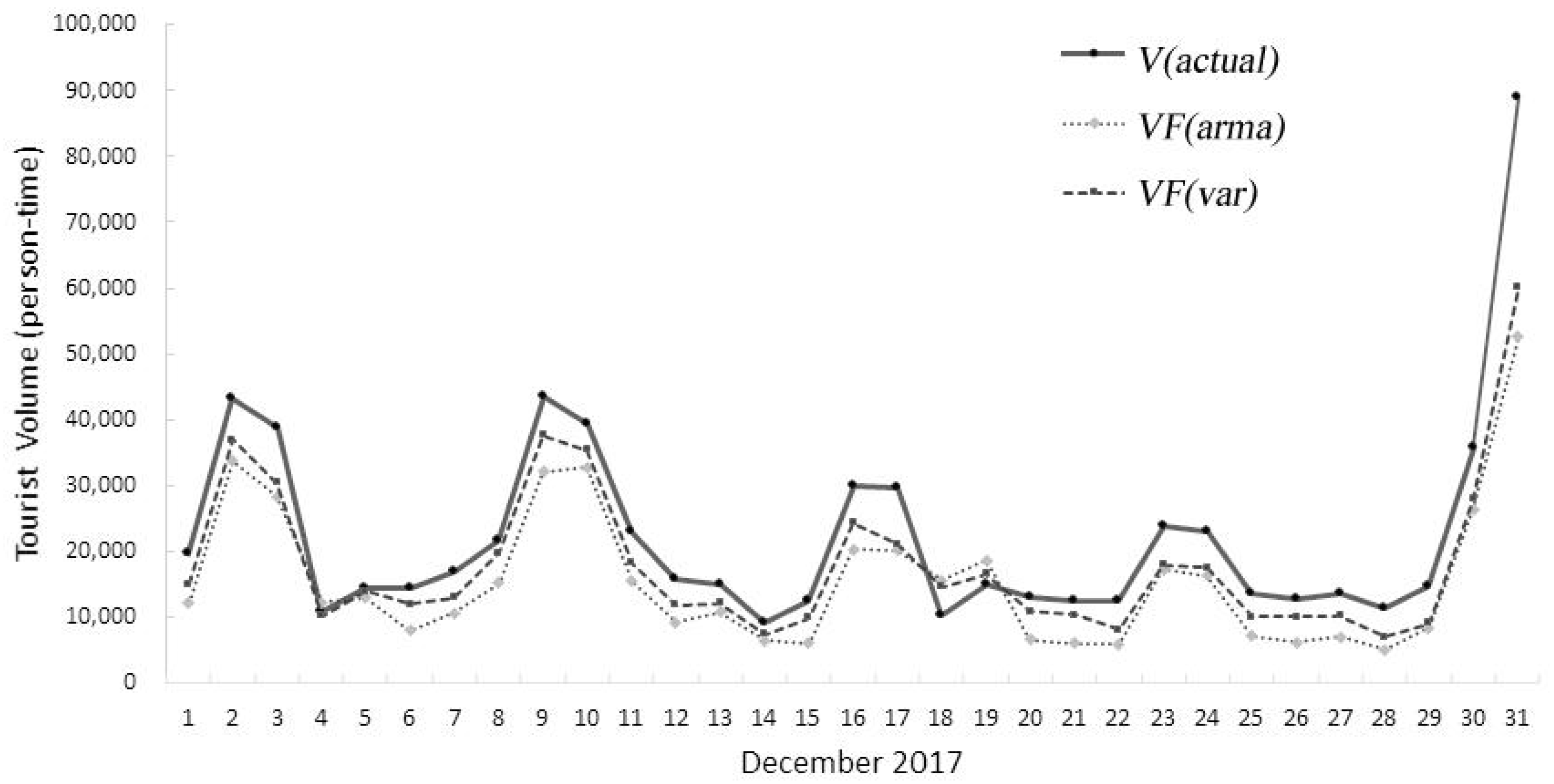
Disclaimer/Publisher’s Note: The statements, opinions and data contained in all publications are solely those of the individual author(s) and contributor(s) and not of MDPI and/or the editor(s). MDPI and/or the editor(s) disclaim responsibility for any injury to people or property resulting from any ideas, methods, instructions or products referred to in the content. |
© 2023 by the authors. Licensee MDPI, Basel, Switzerland. This article is an open access article distributed under the terms and conditions of the Creative Commons Attribution (CC BY) license (https://creativecommons.org/licenses/by/4.0/).
Share and Cite
Zhang, J.; Yan, Y.; Zhang, J.; Liu, P.; Ma, L. Investigating the Spatial-Temporal Variation of Pre-Trip Searching in an Urban Agglomeration. Sustainability 2023, 15, 11423. https://doi.org/10.3390/su151411423
Zhang J, Yan Y, Zhang J, Liu P, Ma L. Investigating the Spatial-Temporal Variation of Pre-Trip Searching in an Urban Agglomeration. Sustainability. 2023; 15(14):11423. https://doi.org/10.3390/su151411423
Chicago/Turabian StyleZhang, Jianxin, Yuting Yan, Jinyue Zhang, Peixue Liu, and Li Ma. 2023. "Investigating the Spatial-Temporal Variation of Pre-Trip Searching in an Urban Agglomeration" Sustainability 15, no. 14: 11423. https://doi.org/10.3390/su151411423
APA StyleZhang, J., Yan, Y., Zhang, J., Liu, P., & Ma, L. (2023). Investigating the Spatial-Temporal Variation of Pre-Trip Searching in an Urban Agglomeration. Sustainability, 15(14), 11423. https://doi.org/10.3390/su151411423







